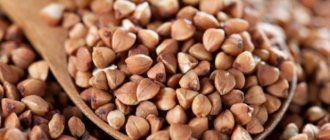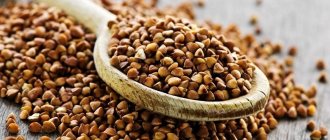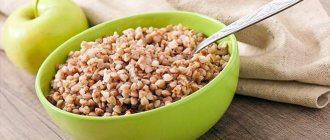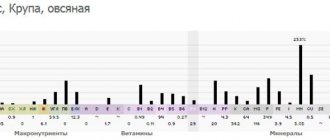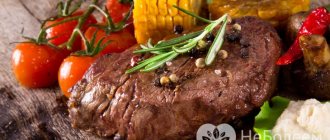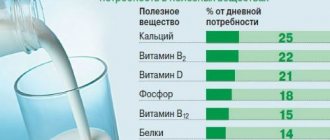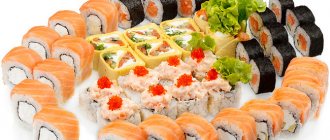There is probably no other porridge that would be as popular in dietary nutrition as buckwheat. And not only girls who are losing weight love buckwheat, everyone eats it. But they eat it, most often, without really thinking about how many benefits it brings to the body.
The time has come to praise buckwheat: its chemical composition is so extensive and important that it is impossible to ignore this product!
In this article:
How buckwheat growsChemical composition of buckwheat and its benefitsDietary fiber in buckwheatAntioxidants and vitamins in buckwheatRich in amino acids and does not contain gluten
How does buckwheat grow?
Photo by Vie Studio: Pexels
Buckwheat is a small, triangular fruit of the herbaceous plant, buckwheat. In many European countries they call it Buckwheat, or “beech wheat.” Because they and the nut are quite similar in appearance. And buckwheat in Latin is called Fagopyrum - “beech-like nut.”
The original appearance of buckwheat is not exactly the same as what you see on your plate. Because before it hits grocery shelves, buckwheat goes through the stages of roasting and cleaning. Depending on the grinding, buckwheat comes in the following types: minimally processed whole grain, coarser or finer grind.
In modern cooking, many things are not made from buckwheat other than the standard cooking method. Buckwheat makes a delicious casserole, pie filling, pudding and even buckwheat popcorn. Why is buckwheat so rich that it has earned the attention of both nutritionists and chefs?
How to eat grains correctly
In order for all the valuable microelements in the cereal to be preserved and enter the body with food, buckwheat must be cooked correctly. In most cases, people boil or stew . So, boiled buckwheat is a useless product that will bring neither harm nor benefit to the body. High temperature will simply kill all active substances. Therefore, it is recommended to eat buckwheat raw or sprouted .
One way to prepare nutritious buckwheat for breakfast: in the evening, pour a few tablespoons of peeled cereal into a glass of kefir and cover. By morning you will receive a cup of delicious and healthy buckwheat porridge.
A popular way to prepare green buckwheat is to sprout it.
What are the benefits of sprouted buckwheat?
First of all, sprouting destroys phytic acid , which is found in large quantities in plant grains, nuts and legumes. This acid comes into contact with all minerals entering the body and takes them away. That is, calcium, iron, zinc and other minerals are absorbed by phytic acid before they can benefit human organs.
In addition, even the smallest sprouts obtained as a result of germination help to break down complex substances, such as sugar and fats, into simple ones .
Chemical composition of buckwheat and its benefits
What you know for sure about buckwheat is that it is rich in iron. But you don’t need to limit buckwheat to just this and forget about the huge amount of other minerals and vitamins it contains. So, what's inside the grain?
- Per 100 g of product contains 13 g of protein, 3.5 g of fat and 71.5 g of carbohydrates. The large amount of complex carbohydrates in buckwheat helps replenish energy.
- 10 g of dietary fiber in buckwheat is a quarter of the minimum requirement for your body per day. Fiber improves the movement of food through the intestines and prevents constipation.
- 18 mg calcium, a mineral that supports bone health. Your body needs a lot of calcium - 1 g, so any product containing calcium will be beneficial for your diet.
- 230 mg of magnesium is half the daily requirement for this macronutrient. Without magnesium, it is difficult to cope with stress and get good sleep.
- Potassium in buckwheat 460 mg. This amount covers 18% of the daily requirement for this mineral. Potassium normalizes heart rate and maintains heart health.
- Phosphorus 40% of daily value. It is not only important for building teeth and bones, but is also involved in energy metabolism.
- And the iron in buckwheat is 2.2 mg, with the daily requirement for women being 18 mg. The iron in buckwheat is in non-heme form, which means it is not absorbed as well as from meat products.
How is buckwheat useful?
Buckwheat has a low glycemic index, which means that glucose from food will be released slowly and will not cause spikes in blood sugar.
As you can see, buckwheat can rightfully be called a superfood, with such a complete composition.
Interesting facts about buckwheat
- Russian historian and popularizer of Russian cooking William Pokhlebkin considered buckwheat an undervalued product and wrote an entire work about it, “The Hard Fate of Russian Buckwheat.” According to Pokhlebkin, its homeland was not China, but Southern Siberia and Altai. He also wrote that the plant received its name in honor of the Greek monks who grew it in monasteries during the times of Kievan and Vladimir Rus.
- The Slavs celebrated the day of Akulina Grechishnitsa on June 13. A week or a week after this day, buckwheat was supposed to be sown, and on the holiday itself, porridge was to be cooked and treated to the poor.
- Buckwheat is a honey plant. Buckwheat honey is dark, viscous, with a tart characteristic taste, rich in iron and zinc. Read more about the benefits of buckwheat (and not only) honey in our article.
- In India, buckwheat flour plays an important religious role. During the 9-day festival of Navratri (the festival of Durga, or Durga Puja), it is customary to fast, consuming only milk, water and special food made from buckwheat flour.
- Despite the fact that the United States of America as a whole is not a “buckwheat” country, the first settlers from Europe brought there not only buckwheat seeds, but also their favorite recipes. Buckwheat pancakes were so popular in the southern states that they were mentioned in such novels as Gone with the Wind by Margaret Mitchell and The Headless Horseman by Myne Reid.
- In the history of modern Russia, buckwheat is known as the product that is the first to disappear from store shelves, along with toilet paper and salt, when a crisis occurs. Psychologists explain this by saying that buckwheat can be called a “memory product”: in difficult times, it was customary to make supplies for long-term storage.
Dietary fiber in buckwheat
Did you know that buckwheat porridge was included in all diet tables for gastrointestinal diseases? Yes, this medicinal porridge is considered dietary not only because of its low calorie content. It contains very beneficial substances for the digestive system.
If you bite into a boiled buckwheat grain, you will see a dark brown shell and a lighter part inside. The outer shell contains insoluble fiber. Therefore, you should give preference to whole buckwheat grains rather than ground ones.
Thanks to insoluble fiber, the overproduction of bile acids is reduced. And this significantly protects your gallbladder from the formation of stones.
Recent studies of dietary fiber have shown that they can have anti-carcinogenic effects. This study specifically looked at breast cancer in women. Regular consumption of dietary fiber reduced the incidence of cancer.
Useful properties of buckwheat
Russian people have long loved to eat buckwheat porridge with milk. I think it’s not in vain. After all, this cereal contains a lot of benefits and is always ready to fill the body of a sick person with it and improve the immunity of a healthy person.
Try making a delicious and lean dish of buckwheat and pumpkin! Look at the step-by-step recipe with photos
So, thanks to the unique combination of vitamin composition, it is very useful in the winter-spring period, when our immunity requires comprehensive support.
People who are occasionally incapacitated by nosebleeds due to the weakness of the walls of blood vessels should include regular consumption of buckwheat dishes in their diet and they will soon forget about this trouble, since buckwheat has the property of strengthening blood vessels.
Try our recipe for merchant-style buckwheat with minced meat! Look at the step-by-step recipe with photos
In addition, buckwheat can significantly help people who are actively struggling with excess weight or those who want to cleanse their body. Recently, a mono-diet (that is, a diet in which you need to consume only one product) of buckwheat has become very popular, which, if all the nuances are followed, allows you to lose up to 10 kilograms.
Antioxidants and vitamins in buckwheat
Almost all representatives of group B vitamins are hidden in whole buckwheat grain. And their impact on the health of the body cannot be underestimated: with a deficiency, the health of the nervous system is impaired and energy levels decrease.
- Buckwheat is rich in vitamin B1 - 28% of the norm. This is thiamine, which is responsible for energy production in your body. It also participates in carbohydrate metabolism. When cooked for a long time, thiamine is destroyed, so for maximum benefit, buckwheat should be soaked and then cooked for 5-10 minutes.
- Vitamin B6 (pyridoxine) in buckwheat is 20% of the daily requirement. A lack of this vitamin in the diet leads to high irritability and insomnia.
- But what vitamin is there in buckwheat even more – niacin or B3. It is beneficial for the nervous system. A 100-gram serving of buckwheat contains 36% niacin. It is also lost when heated, but in uncooked porridge it will be present in sufficient quantity.
Buckwheat contains many components that are valuable for your health, and among them are the guardians of youth - antioxidants.
- Rutin is a phytonutrient for heart health. It strengthens the vascular wall and protects against hemorrhages. Buckwheat contains rutin in its shell, but it is important to note that it is significantly lost during roasting.
- The high content of rutin in buckwheat protects the skin from bad ultraviolet exposure. And ultraviolet radiation, as you know, is a factor in skin aging and early wrinkles.
- Research shows that rutin reduces the risks of atherosclerosis and strokes because it helps produce HDL (good) cholesterol.
- Buckwheat contains phenolic acid, which also actively resists free radicals and promotes cell renewal.
In boiled buckwheat, antioxidant compounds, unfortunately, are not preserved in high concentrations. But still, with regular use, it can have a positive effect on your body.
Conclusion
Buckwheat porridge is a tasty, healthy, nutritious dish. Among vegetarians, it takes an honorable second place after legumes in terms of nutritional value. People who play sports or want to lose weight include buckwheat in their diet. It can improve health, cleanse the body and normalize the functioning of internal organs. Thanks to its rich chemical composition, buckwheat saturates our body with beneficial vitamins, micro and macroelements. Regularly include this valuable product in your diet.
Rich in amino acids and gluten free
It’s worth noting right away that gluten itself is not a villain. This cereal protein may only be dangerous for people who are sensitive to it or have an intolerance to this protein.
But thanks to its “gluten-free” nature, buckwheat porridge is breaking into the leadership of the healthiest porridges. After all, a large amount of this protein in the diet can negatively affect the health of the digestive system.
And the protein in buckwheat is complete - this means that you can get all the essential amino acids with a serving of buckwheat. Among them, the most important for you are:
- tryptophan - from it two very important hormones are formed in your body - the sleep hormone melatonin and the good mood hormone serotonin;
- You need lysine for energy and active brain function; if it is deficient, memory decreases and it is difficult for you to concentrate;
- valine is an amino acid for actively exercising, but even if you don’t have much physical activity in your life, valine helps maintain muscle and bone mass;
- Leucine – helps you feel full faster and promotes weight loss.
And so that you don’t get tired of buckwheat porridge, diversify your diet with other porridges. Either way, you'll get a lot of nutrients from healthy foods.
Composition and nutritional value of buckwheat
Buckwheat is considered the queen of porridges. This is explained by its chemical composition, 75% of which is complex carbohydrates. They give you a feeling of fullness for a long time, slowly releasing energy and reducing the feeling of hunger.
This cereal also contains a lot of protein, which is responsible for muscle tone and saturates the body with essential amino acids (including arginine and lysine). Another important component of the product is fiber. It supports the normal functioning of the gastrointestinal tract, promotes the elimination of toxins and waste.
Nutritional value of buckwheat.
The chemical composition of 100 g of buckwheat will look like this:
- proteins - 11.73 g;
- fats - 2.71 g;
- carbohydrates - 74.95 g;
- water - 8.41 g;
- ash - 2.20 g.
Buckwheat porridge is a fairly high-calorie product (310 kcal/100 g). But even so, it is considered a dietary product that promotes weight loss. This is partly because this product is completely free of sugar, starch and cholesterol.
Which buckwheat producers to choose
It is important to understand that not only its beneficial qualities, but also its effect on the human body will depend on the quality of buckwheat. Choosing a low-quality manufacturer can lead to poisoning and other unpleasant consequences.
Studying the market, you can note buckwheat:
- Russian manufacturer Makfa.
- Russian manufacturer Simply.
- Russian manufacturer Agro Alliance.
- Russian manufacturer Uvelka.
- Russian manufacturer Altai fairy tale.
- Russian manufacturer Don Gusto.
- Russian manufacturer Every day.
- Russian manufacturer Goodwill.
How to cook porridge correctly
Each housewife has her own recipe for cooking buckwheat. At the same time, it takes a lot of time to independently find the best way to prepare a healthy dish. Therefore, it is better to cook according to the general (already proven) recipe:
Read also: Why do you need neutral on an automatic transmission?
- Pour a glass of washed and peeled buckwheat into the pan;
- Pour 2 cups of cold water over the cereal;
- Leave the container on the stove over low heat;
- Cook the buckwheat for 15-20 minutes under a closed lid (without stirring it);
- Remove the pan from the heat and cover it with a towel or scarf.
This cooking method allows you to get crumbly and soft cereals. In addition, buckwheat can also be steamed (recipe in the first half of the article).
